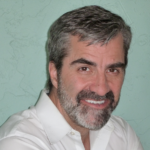Our Stolen Future by Theo Colborn, Dianne Dumanoski, and John Peterson Myers (New York: Penguin Group, 1996).
According to a foreword by Vice President Al Gore, Our Stolen Future by Theo Colborn, Dianne Dumanoski, and John Peterson Myers is the sequel to Rachel Carson’s Silent Spring On this the Vice President and I agree. But what I find remarkable and he apparently does not is that this sequel, 32 years in the making, still fails to deliver the scientific evidence needed to support Ms. Carson’s controversial claims.
I first read Silent Spring at the impressionable age of 17. I vividly recall its opening chapter, titled “A Fable for Tomorrow,” about a community under siege by invisible but deadly toxic chemicals. “Some evil spell had settled on the community,” Carson wrote. “Mysterious maladies swept the flocks of chickens; the cattle and sheep sickened and died.” Carson claimed we were accidentally poisoning the world.
Back in 1962, most scientists were skeptical of Carson’s claims. Too little was known about cancer and other diseases to pinpoint their causes. Most cancer rates were stable or falling, and actual levels of exposure to synthetic chemicals were seldom known. Tests on laboratory animals, typically involving massive doses of suspect chemicals, shed little light on the real-world effects of exposure to minute traces of synthetic chemicals.
Environmentalists have had over three decades to fill in the gaps left by Carson. By their own repeated admissions, the authors of Our Stolen Future have been unable to do so. Like Carson, they still rely more on fear of the unknown than on scientific proof to capture the reader’s attention.
The authors admit that Carson’s biggest fear — that chemicals might be a significant cause of cancer — was overblown and has not been supported by later research. (In fact, a new report from the National Research Council says synthetic chemicals in our diets are present at levels “so low that they are unlikely to pose an appreciable cancer risk.”)
But like Carson, Colborn and company do not allow the absence of proof to stand in the way of spinning a new and even scarier story: that some chemicals may imitate natural hormones and disrupt human sexual development. Admissions of insufficient proof to support this new public health crisis are sprinkled throughout the book, but they often are followed by the book’s most fearsome predictions.
For example, on page 140: “In truth, no one yet knows how much it takes of these synthetic hormone-disrupting chemicals to pose a hazard to humans. All evidence suggests that it may take very little if the exposure occurs before birth.” Well, which is it?
On page 234, the authors warn against “the temptation to extrapolate worrisome trends into apocalyptic, worst-case scenarios,” but then go ahead and do it anyway: “Even so, humans do appear to be gambling with their ability to reproduce over the long term, which should be of grave concern.” Why should we show “grave concern” toward “apocalyptic, worst-case scenarios”?
On the next page, the authors admit that “any connection [between exposure to chemicals before birth and falling SAT scores] is still speculative,” but in the very next sentence they claim such a connection is “particularly probable.” In the discussion of violence on the next page, assertions of a connection are both “purely speculative” and “point to an urgent need” for more research.
On page 178, the authors of Our Stolen Future claim that proof exists that chemicals harm human reproductive health, then deny that such proof exists, and then claim the results of such harm have been proven, all in one sentence! The sentence reads as follows: “Although the animal studies and the DES experience precisely predict problems such as dropping sperm counts and increasing sperm abnormalities, there is unfortunately no way to prove that prenatal exposure to hormonally active synthetic chemicals has, in fact, caused this alarming deterioration in humans.”
This is either sloppy writing or the deliberate use of rhetoric to mislead readers.
The book’s dishonesty goes deeper than this. It is, indeed, woven into its narrative as it tries to portray chief protagonist and coauthor Theo Colborn as having begun her research with an open mind. In fact, as an environmental activist she had targeted synthetic chemicals many years earlier. She and her colleagues have simply been on a fishing expedition to find charges that would stick (or at least get widespread publicity).
The authors of Our Stolen Future inadvertently admit that the whole “detective story” theme is a myth on page 19. They report evidence that cancer rates are lower in the Great Lakes area than in the rest of the nation — thus contradicting claims that lake water contains health-threatening levels of carcinogens. This finding, the authors write, was a “major setback” to Colborn’s work. Why was this good news a “major setback” if she hadn’t already made up her mind about the “threat” of synthetic chemicals?
Our Stolen Future is just another in a long line of books intended to frighten rather than inform the general public. These books insult our intelligence by making radical claims without providing the scientific evidence needed to back them up. And under the guise of objective research and a concern for public health, they in fact advance an agenda that is profoundly anti-technology, anti-progress, and anti-human.
The subtitle of Our Stolen Future says it is a “scientific detective story.” It is hardly that, since the “detectives” in the story set out to frame an innocent industry. Perhaps they should have followed Carson’s lead on this as well, and instead subtitled their book “A Fable for Today.”
Joseph Bast is president of The Heartland Institute, a nonprofit research institute based in Palatine, Illinois. He is also coauthor of Eco-Sanity: A Common-Sense Guide to Environmentalism, which was recently released in paperback by Madison Books.




